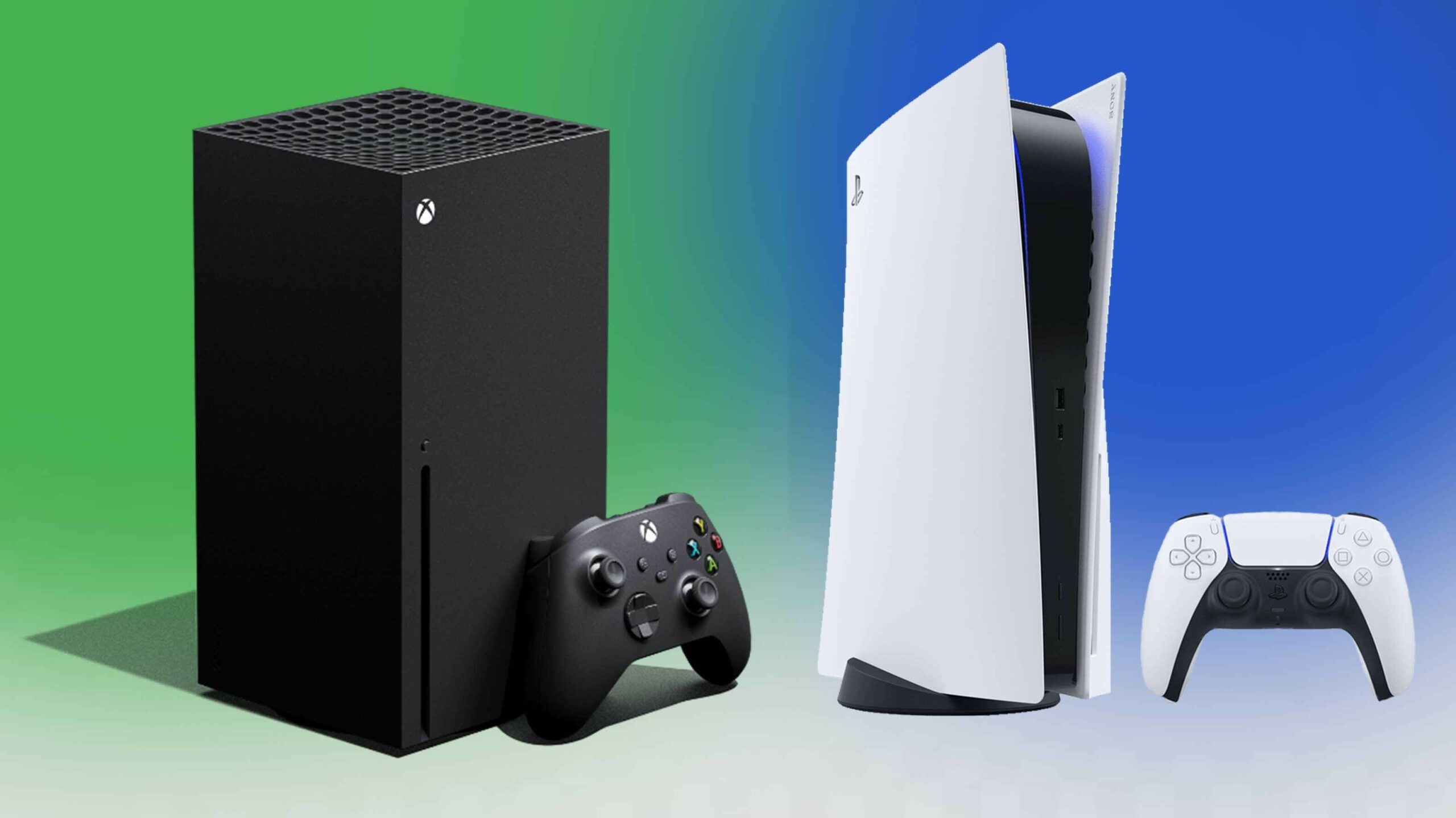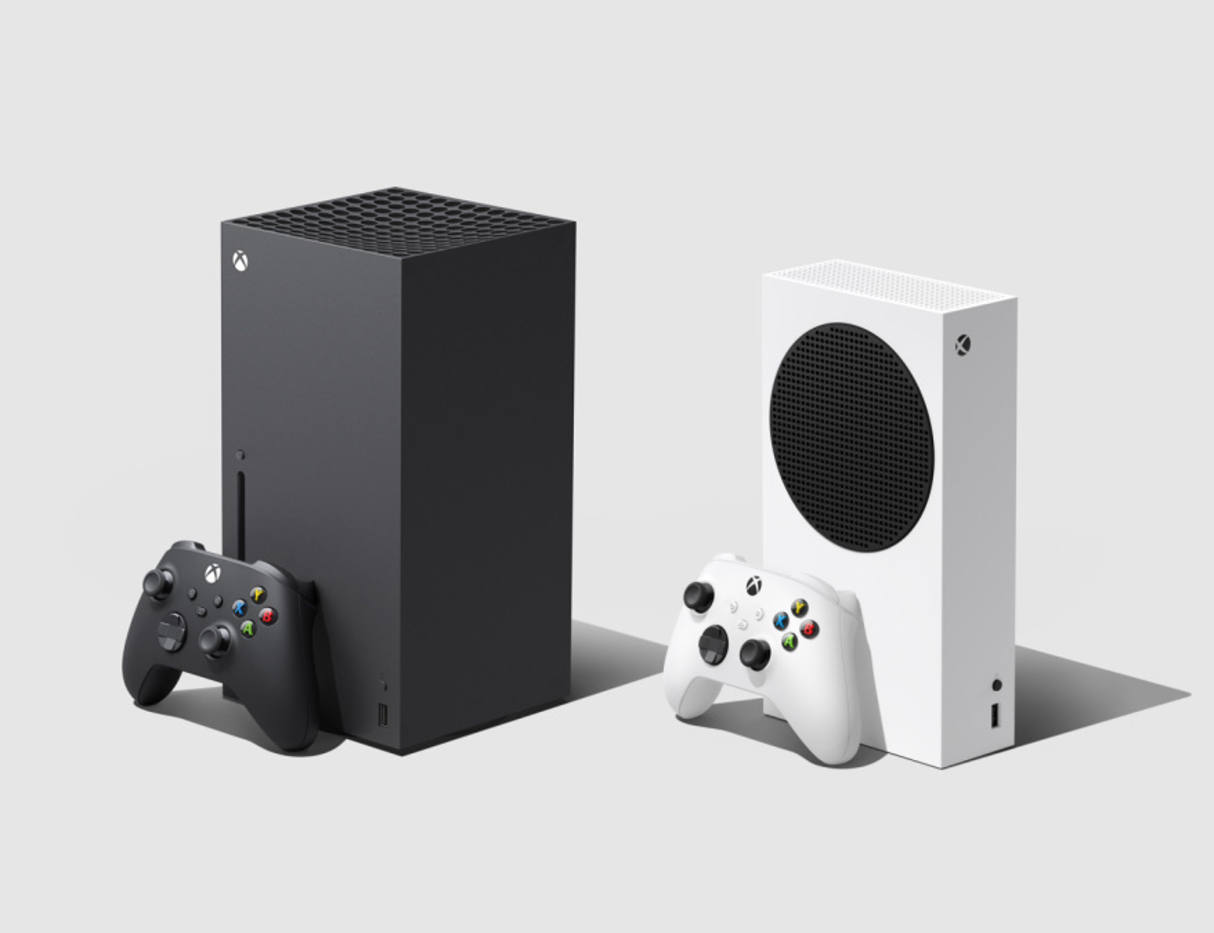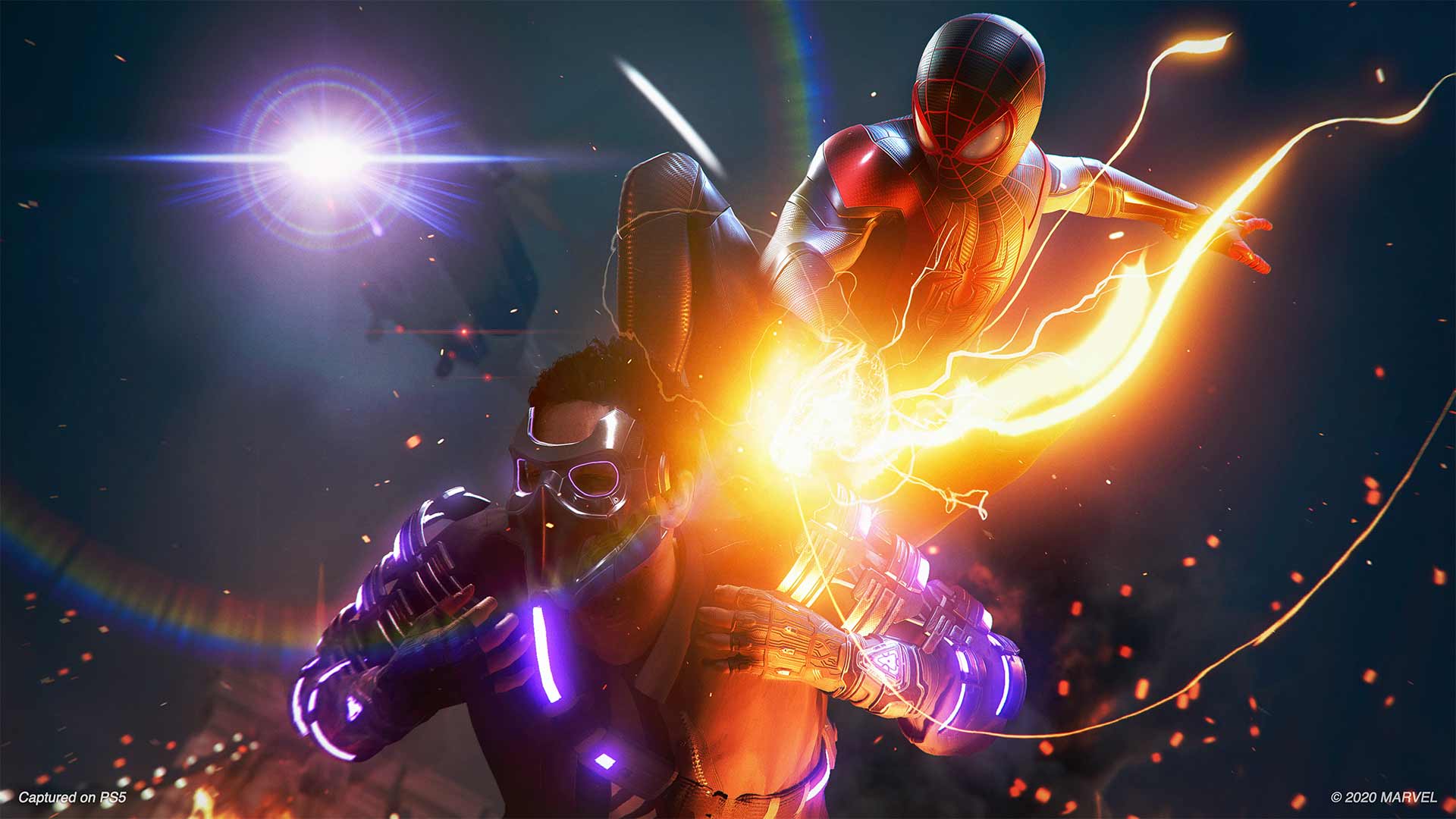
Gaming has always been the perfect method of escapism, and in an inconceivably terrible year like 2020, the art form is arguably more needed than ever.
That’s why it’s rather fitting that Sony and Microsoft are finally set to release their respective next-gen consoles this November. After all, new hardware is always exciting, especially when the PlayStation 5 and Xbox Series X/S are the companies’ first brand-new consoles — excluding mid-generational updates — to come out in seven years.
And with this new generation comes the promise of much-needed change.
When the Xbox One was originally unveiled, it was positioned as an all-in-one entertainment box with a mandatory internet connection and lack of support for used games. While Microsoft ultimately made the wise decision to reverse these controversial plans, it gave the PlayStation 4 a huge early sales advantage while eliminating many of the features that helped differentiate the two consoles. Worse still, the one key difference — Sony’s consistent output of major quality exclusives — didn’t exactly help the already-struggling Xbox One.
Now, however, the console landscape is far different. In fact, for the first time, Sony and Microsoft aren’t even really working towards the same goal, resulting in different — yet equally promising — approaches to hardware that offer consumers more choice and value than ever before.
More than just an Xbox
What’s most notable about Microsoft’s next-gen strategy is that it’s not actually predicated on any one particular box. Instead, the company is focusing on an Xbox ecosystem centred around Xbox Game Pass that extends to several platforms beyond the Xbox Series X/S.
As it stands, the Netflix-like service offers a catalogue of well over 100 AAA and indie games — all for the insanely low price of $11.99 CAD/month on either console and PC. Better yet, $16.99/month nets you Game Pass Ultimate, which includes Game Pass for both Console and PC, as well as Xbox Live Gold and mobile game streaming (more on that later).
And somehow, Game Pass is only getting bigger. On November 10th, EA Play — Electronic Arts’ $24.99/year subscription service — which includes a catalogue of more than 60 games — will be added to Xbox Game Pass Ultimate at no additional cost. Beyond that, Xbox has bolstered Game Pass through bold acquisitions of some impressive developer talent, including Obsidian (The Outer Worlds), Ninja Theory (Hellblade: Senua’s Sacrifice) and Double Fine (Psychonauts). As part of the Xbox Game Studios family, this means that all of their games will come to Xbox Game Pass on day one, like Halo Infinite, Avowed, Everwild and whatever relatively new Xbox-owned studio The Initiative is working on.
But the biggest Game Pass news came last month when Microsoft revealed plans to acquire Bethesda parent company ZeniMax Media for $7.5 billion USD (about $9.9 billion CAD). Throughout the Xbox One era, people criticized Xbox for a dearth of exclusives, especially as PlayStation and Nintendo pumped out hit after hit. Given those gripes, what better way for Xbox to respond than buying one of the biggest publishers in gaming?
When all is said and done, ZeniMax will bring Xbox Game Studios’ roster of developers up to 23 — 10 more than even PlayStation owns. ZeniMax, in particular, will provide Xbox with a staggering amount of developer talent and high-profile IP to mine, including Bethesda Game Studios (Fallout, The Elder Scrolls), Arkane Studios (Dishonored, Deathloop), id Software (Doom, Doom Eternal) and its first Japanese studio, Tango Gameworks (The Evil Within, Ghostwire: Tokyo).
Besides promising to honour existing deals to release Bethesda-published games Deathloop and Ghostwire Tokyo: Tokyo on PS5, Microsoft says it will decide what to do with future Bethesda games on a “case-by-case” basis. Therefore, it remains to be seen what the company ultimately does with those properties, though the fact that it has free rein over the lot of them is nonetheless significant.
Quite honestly, though, it seems highly unlikely that Microsoft would spend such a staggering amount of money — for context, nearly as much as Disney paid for Marvel and Lucasfilm combined — if it didn’t intend for some exclusivity with Bethesda’s games, even in a Final Fantasy VII Remake-esque timed capacity. In any event, the simple fact that all of Bethesda’s games will come to Game Pass — including, most notably, its mysterious new IP Starfield — on day one alongside all other Xbox Game Studios titles gives the service unbelievable value.
Beyond a robust catalogue, Game Pass is also appealing because of its ubiquity. Of course, you’ll be able to access the service on the next-gen, $599 Xbox Series X, the most powerful console ever released, and benefit from 4K with many of these games. Alternatively, the service will also be on the Xbox Series S, which offers many of the same next-gen features — such as framerates of up to 120fps, Quick Resume to rapidly swap between games and full backwards compatibility — while not featuring true 4K or a disc drive to cut the cost to $379. Both consoles will also release side-by-side on November 10th.
Further, Microsoft stresses that because it decided early on to adopt this radical two-system approach, it was able to design the consoles to be easily scalable. In other words, developers should, in theory, be able to get the same games running on both SKUs without too much trouble. This means that from the consumer’s perspective, games like Halo Infinite should be playable on both boxes with many of the same next-gen enhancements, outside of the Series X’s higher resolution.
For consumers, the ability to jump into next-gen for $379 — the same price as the current Xbox One S and PS4, and actually $20 less than the cost of a Switch — really can’t be understated. It’s a great option for more cash-strapped gamers or casual players who just want a new system for popular titles like Call of Duty, Minecraft and Fortnite. Meanwhile, Game Pass also eliminates the need to pay full price for games, although you can still do that (and you’ll need to for third-party games like Cyberpunk 2077, Call of Duty: Black Ops Cold War and Watch Dogs: Legion that are not included in the service).
Even better, Microsoft has finally brought its ‘All Access’ financing program to Canada through EB Games, allowing gamers to pay $29.99/month for the Series S and $39.99/month for the Series X for 24 months, with two years of Game Pass Ultimate thrown in at no additional cost. Amid the COVID-19 pandemic, having all of these flexible payment options is a Godsend. And, of course, those with fewer financial concerns can always go one step further than consoles and invest in a gaming PC, as Microsoft will continue to bring all of its first-party games to PC as well as Xbox.
What’s more, the Xbox Series X and S’ extensive backwards compatibility — every Xbox One game, as well as a great selection of 360 and original Xbox titles — means that you can bring your old games to next-gen with you. Many backwards compatible titles are already on Game Pass, too. Because of the next-gen tech, these games also automatically load much faster and can even get automatic bumps in resolution and/or frame rate — all without any optimization on the developer’s end. (The PS5, by comparison, will support “99 percent” of PS4 games at launch, although only “select” titles will receive enhancements like higher fidelity and framerates or reduced load times.)
But the final piece of the Xbox puzzle — and, perhaps, the most ingenious bit of it all — is Game Pass Ultimate’s mobile game streaming feature. Microsoft has smartly acknowledged that there are around three billion gamers around the world when factoring in the massive number of mobile players. Therefore, the company has combined Game Pass with its extensive cloud infrastructure to bring console-quality gaming to Android. (Microsoft is also reportedly working on a browser app for Game Pass on iOS to circumvent Apple’s restrictive App Store policies.) More importantly, the tech works incredibly well — I can’t stress how mind-blowing it is to play a first-person shooter like Halo: The Master Chief Collection or sprawling open-world RPG like The Witcher 3: Wild Hunt on a phone.
Even better, because both streaming and the games catalogue are included in one monthly fee, Microsoft has already ensured that Game Pass has exponentially more value than Google Stadia, and — based on what we know so far — Amazon’s Luna. What those platforms also lack is a rock-solid gaming network like Xbox Live, which Microsoft has cleverly integrated into Game Pass streaming. This means that online play, friends lists, achievements and game saves can all carry over to your phone. The ability to access an ever-growing catalogue and a robust service like Xbox Live all on your phone for only $16.99 per month is a wonderful way to make gaming more accessible than ever.
PlayStation and the power of tradition
While Microsoft tackles next-gen in a more unorthodox, platform-agnostic way, Sony is sticking to the tried-and-true method of focusing on a single console.
Well, to a degree, anyway; for the first time ever, the company is coming out with two PS5 SKUs at launch — a standard disc-drive equipped box, and a disc-less, ‘All Digital’ model. However, unlike the Xbox Series X/S, physical media support is the sole differentiator between the two PS5 models. The boxes otherwise have the exact same specs.
Still, doing away with the disc drive means the All Digital Edition can be priced at $499, a fair bit less than the $629 standard PS5. Having both options is nice, especially for those like me who still prefer the flexibility of being able to sell/trade-in/borrow physical games — arguably more invaluable than ever as some next-gen games are set to be priced at $89.99.
Beyond the two SKUs, though, Sony remains committed to a singular console architecture that can be the foundation for a wide variety of exclusives. After all, that’s worked exceptionally well for the PS4 — now the second best-selling console of all time after the PS2. At launch, the PS5 will sport a surprisingly solid lineup of games, including Marvel’s Spider-Man: Miles Morales, Demon’s Souls and Sackboy: A Big Adventure.
While Spider-Man, Sackboy and next year’s Horizon Forbidden West will all be on both PS4 and PS5 — which, admittedly, runs counter to messaging from Sony earlier this year — they will still look and run better on PS5, and surely sell well on the console, as well. Naturally, there will also still be PS5-exclusive games, like undated “launch window” title Ratchet and Clank: A Rift Apart and, presumably, 2021’s untitled God of War sequel.
Most importantly, the PS5’s much-touted SSD — described to be “a lot faster” than the Series X’s on paper — has the potential to improve gaming experiences immensely. On a basic level, being able to load games at record speeds on consoles is tantalizing enough. But the greater applications of this technology are what’s most intriguing.
Over the past year, comments from PS5 lead architect Mark Cerny and a subsequent leak have pointed to some sort of feature (reportedly called ‘Activities’) that lets you instantly jump into specific parts of a game right from the console’s dashboard. While exact use cases would surely vary depending on the developer, it’s easy to imagine being able to hop straight into a specific multiplayer mode in Call of Duty: Black Ops Cold War or maybe even a specific level of the campaign in Miles Morales, among other hypotheticals.
But we don’t just need to imagine; we’ve already gotten a taste of how the SSD is empowering specific games and even changing the way they’re designed.
In the case of Ratchet and Clank, the SSD helps power crazy setpieces in which our heroes seamlessly go from varied locales across completely different time periods — all without any visible load times. We’ve seen similar technical wizardry at work in Demon’s Souls, where the protagonist is able to fast travel almost instantly. And these are just early PS5 games; it’s exciting to think about what developers will do later in the console’s lifecycle.
Likewise, the PS5’s Tempest 3D Audio Tech has the potential to make games even more immersive. It’s fascinating to hear Guerrilla talk about how 3D Audio allows Horizon‘s machines to sound different and be more easily located, or Crystal Dynamics mention how the tech helps you keep track of where your teammates and enemies are in Marvel’s Avengers. At launch, 3D Audio is only supported through select headphones, but Sony is working to enable it through TV virtual surround sound in the future.
At the same time, PlayStation has also revamped its long-running line of ‘DualShock’ controllers into the ‘DualSense,’ which offers a variety of new features. The most notable of these are the haptic feedback and adaptive triggers, which react in remarkably different ways while playing. For example, Insomniac has spoken about how haptic feedback in the appropriate direction on the controller can be used to simulate Miles Morales’ Spider-Sense warning him of incoming attacks. Arkane, meanwhile, will lock triggers when your gun jams in Deathloop to give players a physical prompt to fix their weapon. There are several more examples provided by developers, and they all sound inventive and immersive in their own ways.
To be sure, these features could be gimmicky in the long run (like the DualShock 4’s touchpad and built-in speaker), and they almost definitely won’t revolutionize games. Nonetheless, it’s been interesting so far to hear how developers are using them so far. Moreover, there’s promise for greater use of the PS5’s unique tech in upcoming exclusives like the God of War sequel and Final Fantasy XVI, as well as whatever new games will come from veteran PlayStation studios like Naughty Dog (The Last of Us Part II) and Sucker Punch (Ghost of Tsushima).
Beyond traditional gaming experiences, Sony has also committed to supporting PlayStation VR on the PS5. VR is one of the major areas in which Sony and Microsoft drastically differ, with the latter company supporting the technology only on Windows PCs, not consoles. The PS5 will even support the existing PS VR headset and its library of hundreds of games, like Moss, Astro Bot Rescue Mission, Superhot, Blood & Truth and Beat Saber.
In terms of future big PS VR support, we do know that all three modern Hitman games are coming to PS VR, and Resident Evil Village is rumoured to be following suit. (Note: PS4’s PS Camera is required along with a free adapter that Sony has not yet confirmed how to claim since — bafflingly — the PS5’s HD Camera accessory will not work with the old PS VR.) At any rate, a new iteration of the PS VR — including one that, mercifully, may even go wireless — is practically a given for the PS5, and it will be interesting to see what it brings to the table.
This is all without even mentioning PlayStation Now, Sony’s game streaming service. We know it’s coming to PS5 and will allow you to stream its entire catalogue of PS4 games, but it seems safe to assume the program will evolve in the years to come.
The future is bright
Of course, both companies have run into a few bumps in the road to next-gen. Xbox, for its part, suffered a major loss to its early software lineup with the delay of Halo Infinite, which resulted in there being no marquee exclusives to launch alongside the Xbox Series X. PlayStation, on the other hand, has bungled its messaging on cross-gen first-party titles and the availability of PS5 pre-orders.
Despite these early hurdles, though, it’s telling that neither company has repeated the grander failings of yore, like the PS3’s initial egregious price, complex architecture and lack of games or the Xbox One’s aforementioned launch issues. Instead, both Sony and Microsoft have ensured that they’re in uniquely strong positions in the long-term. Specifically, Xbox is more about offering a huge variety of games that can be played on a slew of different devices — all through through a single service. PlayStation, by contrast, is leveraging the unique strengths of one console — as well as peripherals like the DualSense and PS VR — to power games in new ways.
Whether you’re a longtime Xbox or PlayStation gamer (or even someone with Nintendo’s massively successful Switch), one thing’s for sure — this generation has a lot to look forward to.
MobileSyrup may earn a commission from purchases made via our links, which helps fund the journalism we provide free on our website. These links do not influence our editorial content. Support us here.





